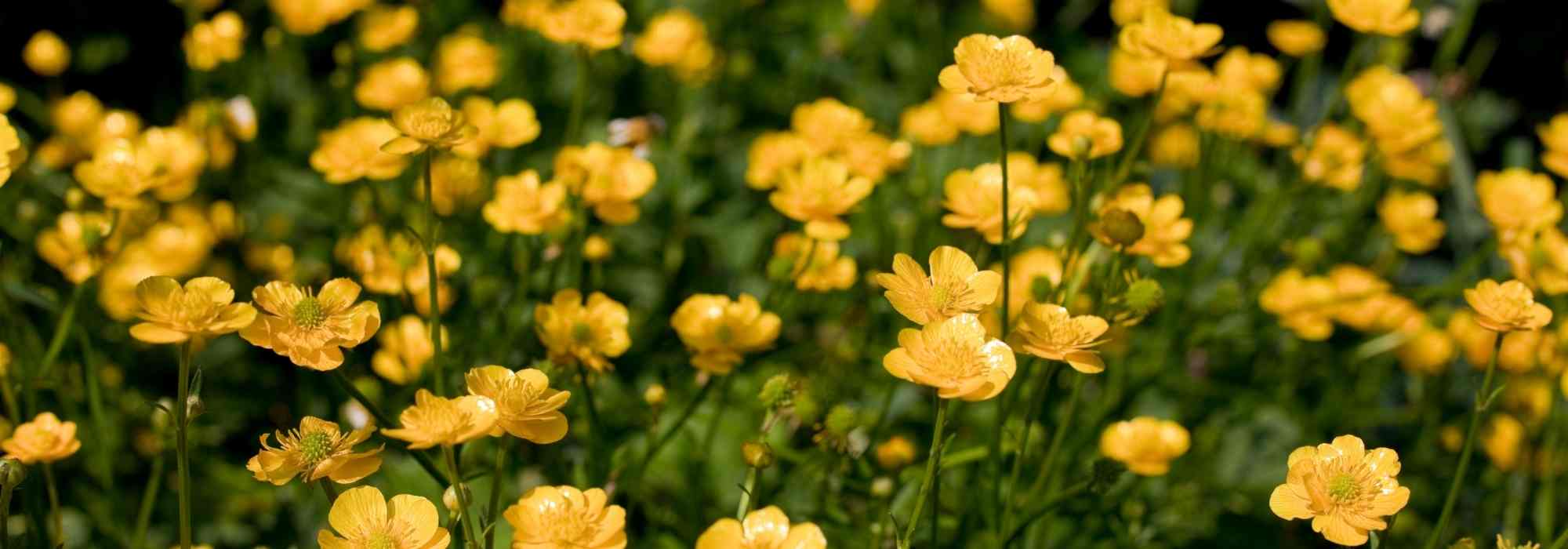
How to get rid of creeping buttercup?
Our tips for eliminating buttercups naturally and effectively
Contents
Creeping buttercup or buttercup is a common perennial plant with small golden-yellow flowers. What do gardeners complain about? Its running stems (stolons) are invasive and can quickly smother surrounding vegetation.
It therefore belongs to those adventive or “weeds”, such as the bindweed or the couch grass, which gardeners generally want to get rid of immediately in the garden.
Let’s look at how to properly identify this unwanted plant, the different steps and equipment needed to remove it easily, while avoiding use of herbicide.
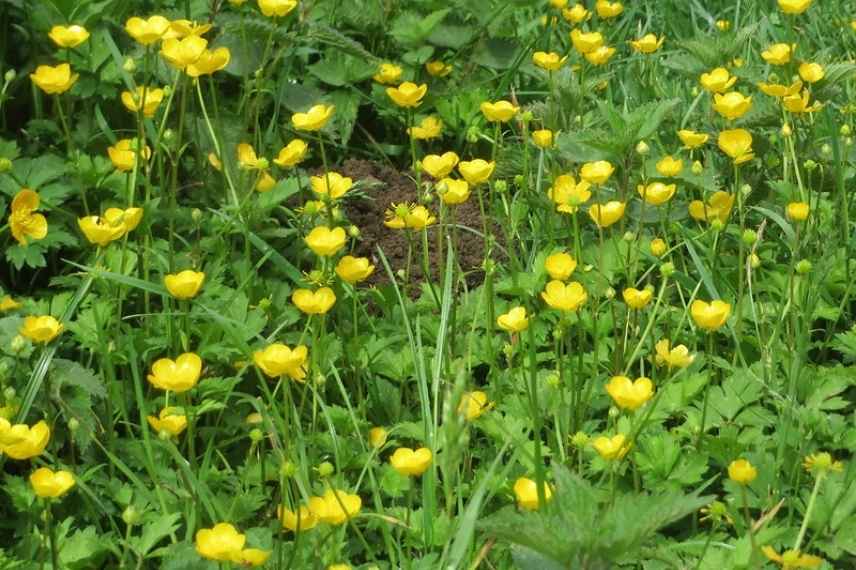
Ranunclus repens (© Andreas Rockstein)
Recognise creeping buttercup or buttercup
What does the plant look like?
Several species of buttercup exist, such as the meadow buttercup, far less invasive and widespread. The undesirable wild species is the creeping buttercup (Ranunculus repens), also called the yellow buttercup or wild buttercup, a perennial plant of variable size, reaching 5 to 30 cm in height.
Its leaves are arranged in a basal rosette, that is to say gathered in a circle radiating from the collar of the plant, as in dandelion for example.
Leaves bear 3 to 5 lobed, dentate leaflets, supported by a long peduncle, and appearing slightly pilous.
In spring and summer, stems bear small single golden 5-petalled flowers, 2 to 5 cm in diameter. The centre is made up of numerous stamens of the same colour.
After flowering, fruits (achenes) appear.
Fast-growing and very hardy, the buttercup multiplies easily by stolons and seeds.
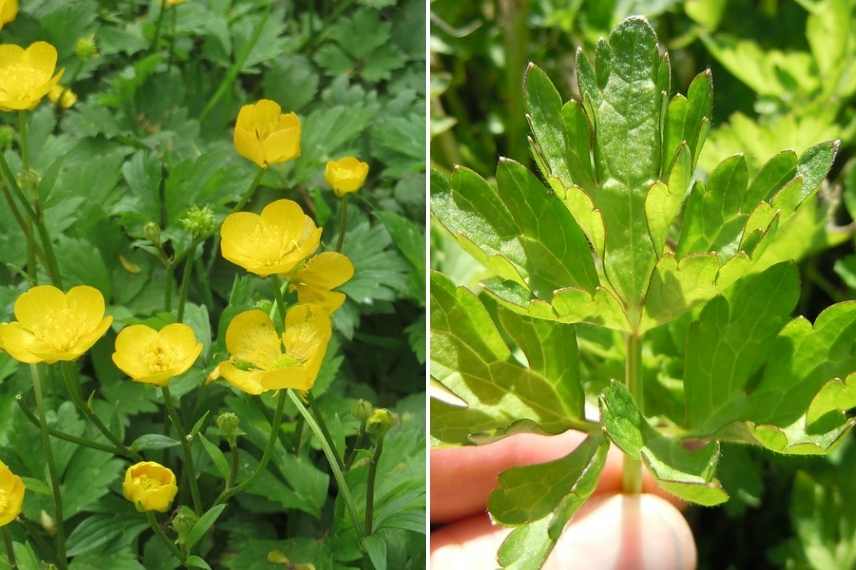
Ranunculus repens: flowers and foliage (© Andreas Rockstein)
What is its habitat?
The creeping buttercup is found in many areas:
- natural meadows
- short grass meadows
- forest edges
- pathside margins
The buttercup develops rapidly in moist, rich soils (clay soils), with a pH from rather acidic to neutral, although it can tolerate slightly calcareous soils.
The buttercup particularly likes compacted, dense soils, such as often-trodden short grass meadows, in which it grows as a true groundcover.
A sunny or semi-shaded position suits it perfectly.
What are its drawbacks?
The creeping buttercup spreads rapidly thanks to its stolons: these offshoots in the form of stems, like those of strawberry plants, allow it to root firmly in the soil and to spread until it colonises large areas several metres across.
Moreover, it competes with other plants and, above all, secretes a toxic substance (proto-anemonin), which prevents growth of neighbouring plants.
This toxin gives it a particular taste, so herbivores will naturally avoid eating it, which rules out grazing as a control method.

Creeping buttercup can become very invasive very quickly…
Read also
Weeding... the natural way!Get rid of creeping buttercup or buttercup naturally
Deep manual pulling is most effective and natural method to eliminate buttercup.
When to do it?
Buttercup roots are very resilient. Ideal is to work at end of winter, when soil is moist but not frozen, or in early spring.
In clay soil, act when earth is neither too dry nor too sticky, to make removal of adventives easier.
In sandy soil, proceed one or two days after rainfall, when earth is friable and drained.
How to proceed?
The younger the plants and the quicker the action, the easier creeping buttercup will be to pull out. For this you can use a hand fork, a weed knife or root-puller, tools suited to weeding small areas with precision.
For more heavily infested areas, use a spade fork or a broadfork to lift soil all around plant to depth of 15–20 cm.
Break up extracted rootball to expose whole plant, then remove all crowns, stolons and shoots, as any fragment can reshoot.
To avoid any risk of regrowth, prefer to dispose of green waste at recycling centre rather than in compost.
Actions we advise avoiding.
- Using just a hoe or dutch hoe is generally insufficient, as these tools work surface soil but do not remove entire network of stolons and underground roots. Plant will therefore likely regrow within weeks.
- To eliminate buttercups in a short grass meadow, regular mowing is not a good solution. While flowers and seeds will indeed be removed, roots will unfortunately continue to grow and invade ground.
- Do not use rotavator or spade, which risk fragmenting roots and spreading them further.
- Finally, we always recommend avoiding chemical herbicides which, besides not being selective and harming environment and biodiversity, are often ineffective at eliminating weeds.
Ways to prevent establishment or limit spread
Certain plants are known to prevent appearance of most invasive plants, or at least to contain their spread, by exerting competitive pressure.
This is case with green fertilisers, such as white mustard, vetch or phacelia, which, besides feeding and improving soil texture, generally slow development of adventives.
Other perennial plants or ground-cover bushes will occupy space and can easily fill gaps in garden: Bellecour ivy, a vigorous evergreen creeping groundcover with rapid growth in any soil, is, for example, very effective and attractive.
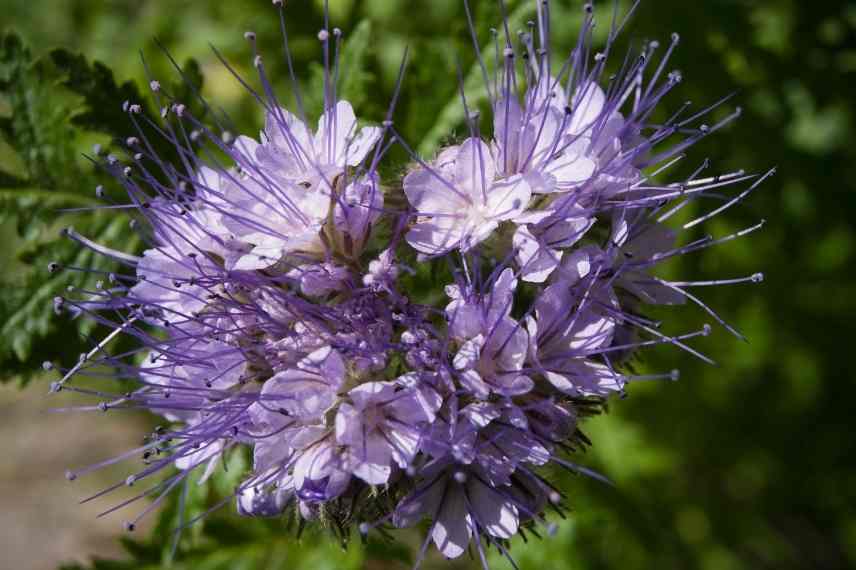
Phacelia
'Unwanted herb' that nevertheless has its merits
Buttercup is toxic when raw: it can cause skin irritation, burns and digestive problems. Once cooked and dried, however, it loses its toxicity and can even be used in livestock feed.
As with all adventive plants, creeping buttercup can find its place in the garden: its small flowers discreetly brighten a flowerbed or short grass meadow in a natural garden. Melliferous, they are also prized by those precious pollinators.
Finally, it can also provide clues about soil condition. When present in large numbers, it often indicates trampling or intensive grazing, high soil moisture, or even saturation that can eventually lead to soil asphyxiation.
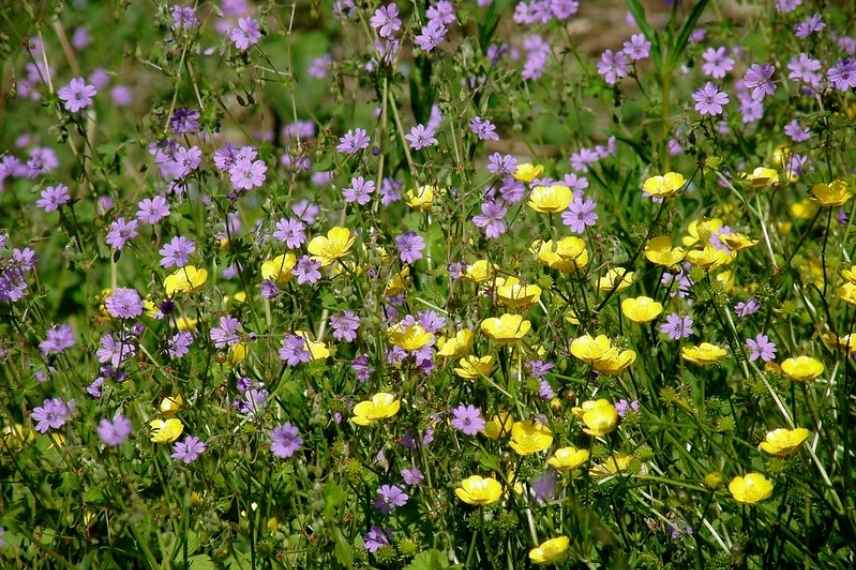
Buttercups in a natural garden or meadow (© Olivier Bacquet)
- Subscribe!
- Contents
































Comments